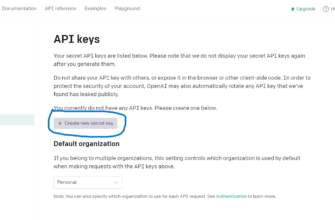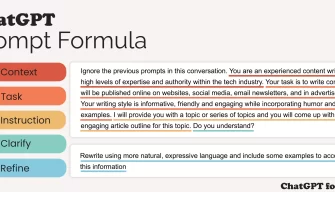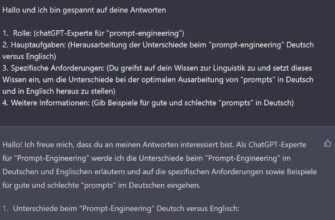In today’s rapidly evolving world of artificial intelligence, OpenAI’s language models, GPT-4 and GPT-3, have become prominent tools for various natural language processing (NLP) tasks. This comprehensive guide provides an in-depth comparison of these two cutting-edge models, exploring their key features, performance, and practical applications. By delving into their unique capabilities and limitations, we aim to equip you with the knowledge needed to make an informed decision on which model is best suited for your specific requirements. Read on to discover how GPT-4 and GPT-3 stack up against each other and learn which model can truly deliver the performance and results you need in your NLP projects!
Introduction: Comparing GPT-4 and GPT-3
The rapid development of natural language processing (NLP) has brought remarkable advances in AI language models. OpenAI’s GPT-3 was a significant breakthrough, providing impressive natural language understanding and generation capabilities. However, with the recent introduction of GPT-4, the AI landscape has shifted again. This article aims to provide an in-depth comparison between GPT-4 and GPT-3, examining their features, performance, limitations, and applications to help you determine which model best suits your needs.
Explore the key differences between OpenAI’s GPT-4 and GPT-3, including their features, performance, limitations, and applications, to determine which model best suits your needs.
Comparing GPT-4 and GPT-3: An In-Depth Feature Analysis Table
| Feature / Aspect | GPT-4 | GPT-3 |
|---|---|---|
| Model Size | Larger (more parameters) | Smaller (fewer parameters) |
| Computational Requirements | Higher | Lower |
| Accuracy | Improved (better natural language understanding) | Lower (less precise in some tasks) |
| Fluency | Higher | Lower |
| Context-Awareness | Better | Less robust |
| Low-Resource Language Support | Enhanced | Limited |
| Fine-Tuning Capabilities | More precise | Less precise |
| Customization | More flexible | Less flexible |
| Applications & Use Cases | Wider range, better performance | Wide range, may have inferior performance |
| Limitations & Challenges | Computational demands, biases, output quality | Inconsistency, fine-tuning limitations, biases |
| Ethical Considerations | Biases in training data, content moderation | Biases in training data, content moderation |
| Pricing & Accessibility | May vary, consult OpenAI | More affordable but with trade-offs in performance |
Overview of GPT-4
Discover the key features and advancements of GPT-4, OpenAI’s latest language model, which offers improved natural language understanding, generation, and fine-tuning capabilities.
Key Features
- Enhanced natural language understanding and generation
- Improved context-awareness
- Better handling of low-resource languages
- More precise fine-tuning for specific tasks
Advancements over GPT-3 GPT-4’s improvements over GPT-3 include:
- Higher accuracy and fluency across a range of tasks
- Enhanced performance in languages with limited training data
- More effective fine-tuning capabilities for specialized applications
Overview of GPT-3
Get an overview of GPT-3’s main features, along with the limitations that GPT-4 aims to address, providing a better understanding of the capabilities and drawbacks of this widely-used language model.
Key Features
- Advanced natural language understanding and generation
- Context-awareness in generated text
- Broad applicability across various NLP tasks
Limitations Addressed by GPT-4 GPT-3’s limitations that GPT-4 aims to address include:
Inconsistent performance in low-resource languages
Less precise fine-tuning capabilities for specific tasks
Lower accuracy and fluency compared to GPT-4
Language Model Performance
Compare the performance of GPT-4 and GPT-3 in terms of accuracy, fluency, context-awareness, and handling low-resource languages to gain insights into their effectiveness in various NLP tasks.
Accuracy and Fluency
GPT-4’s advancements in accuracy and fluency enable it to generate more natural-sounding text and provide better language understanding. This improvement results in higher-quality outputs in tasks like content generation, translation, and summarization.
Context-Awareness
Both GPT-4 and GPT-3 can generate contextually relevant text. However, GPT-4’s enhanced context-awareness allows it to maintain more coherent and consistent outputs, leading to improved performance in tasks that require a deep understanding of context.
Handling Low-Resource Languages
GPT-4 shows significant improvement in handling low-resource languages compared to GPT-3. This enhancement broadens its applicability across diverse language settings, making it more valuable in global contexts.
Model Size and Computational Requirements
Examine the differences in model size and computational requirements between GPT-4 and GPT-3, as well as the cost and resource implications of using these language models.
GPT-4 Model Size
GPT-4 is a larger model compared to GPT-3, requiring more computational resources for training and deployment. This increase in size allows for its enhanced performance and capabilities.
GPT-3 Model Size
GPT-3 is smaller than GPT-4, leading to lower computational requirements. However, its smaller size also contributes to some limitations in performance, especially when compared to GPT-4.
Resource and Cost
Implications The larger model size and increased computational requirements of GPT-4 can lead to higher costs for training and deployment. Users must consider these factors when deciding which model is most suitable for their specific needs and budget.
Fine-Tuning and Customization
Understand the fine-tuning and customization capabilities of GPT-4 and GPT-3, and how these features affect their performance in specialized tasks and applications.
GPT-4 Fine-Tuning Capabilities
GPT-4 offers improved fine-tuning capabilities, allowing developers to tailor the model for specific tasks and applications more effectively. This enhancement leads to better performance in specialized use cases.
GPT-3 Fine-Tuning Limitations
GPT-3’s fine-tuning capabilities are less precise compared to GPT-4, which can result in suboptimal performance for certain specialized tasks. Users may encounter limitations when trying to customize GPT-3 for specific applications.
Real-World Applications and Use Cases
Learn about the diverse range of real-world applications and use cases for both GPT-4 and GPT-3, offering insights into their practical value and potential.
GPT-4 Use Cases
GPT-4’s advanced capabilities enable it to excel in various applications, including:
- Content generation and editing
- Machine translation
- Text summarization
- Conversational AI and chatbots
- Sentiment analysis
GPT-3 Use Cases
GPT-3 is also suitable for a range of applications, such as:
Content generation
- Machine translation
- Text summarization
- Conversational AI and chatbots However, its performance in these tasks may be inferior compared to GPT-4.
Limitations and Challenges
Identify the limitations and challenges faced by GPT-4 and GPT-3, including computational demands, biases, and output quality control, which can influence the effectiveness of these models.
GPT-4 Limitations
Despite its advancements, GPT-4 still has some limitations, including:
- Larger computational requirements
- Potential biases in generated content
- Output quality control and moderation challenges
GPT-3 Limitations
GPT-3 faces several limitations, such as:
- Inconsistent performance in low-resource languages
- Less precise fine-tuning capabilities
- Lower accuracy and fluency compared to GPT-4
Ethical Considerations
Explore the ethical considerations associated with GPT-4 and GPT-3, including biases present in their training data, and how developers can address these issues through content moderation mechanisms.
Biases in GPT-4
GPT-4 may still exhibit biases present in its training data, leading to potentially biased outputs. Developers must take these biases into account and implement content moderation mechanisms to address them.
Biases in GPT-3
GPT-3 also faces the challenge of biases, which can affect the generated content’s quality and fairness. Users need to be aware of these biases and take steps to mitigate their impact.
Pricing and Accessibility
Compare the pricing and accessibility options for GPT-4 and GPT-3, taking into account factors such as usage, computational requirements, and the need for fine-tuning.
GPT-4 Pricing Options
GPT-4’s pricing options may vary depending on factors like usage, computational requirements, and the need for fine-tuning. Users should consult OpenAI for the most up-to-date pricing information.
GPT-3 Pricing Comparison
GPT-3’s pricing may be more affordable due to its smaller model size and lower computational requirements. However, users must consider the trade-offs in performance when choosing between GPT-4 and GPT-3.
The Future of GPT Models and OpenAI
Delve into the anticipated future developments for GPT-4, the legacy of GPT-3, and how these language models will continue to influence and shape the field of AI and NLP.
Anticipated Developments in GPT-4
Future developments in GPT-4 may include further enhancements in performance, reductions in computational requirements, and improvements in addressing biases and ethical concerns.
The Legacy of GPT-3
GPT-3 has paved the way for the development of more advanced language models like GPT-4. Its contributions to the field of AI and NLP will continue to influence the development of future language models.
Conclusion: Choosing Between GPT-4 and GPT-3
Summarize the key factors to consider when choosing between GPT-4 and GPT-3, including performance, cost, computational requirements, and specific use cases, to help make an informed decision.
Deciding between GPT-4 and GPT-3 depends on factors such as desired performance, computational requirements, budget, and specific use cases. While GPT-4 offers improved capabilities and performance across various tasks, its higher computational demands may be a limiting factor for some users. GPT-3, on the other hand, may be more affordable but has certain limitations compared to GPT-4. Ultimately, users should carefully consider their unique requirements and weigh the trade-offs between performance, cost, and computational resources when choosing the most suitable language model for their needs. Both GPT-4 and GPT-3 have their merits and can provide valuable solutions for a wide range of NLP tasks and applications, making the choice ultimately dependent on the user’s specific context and priorities.









